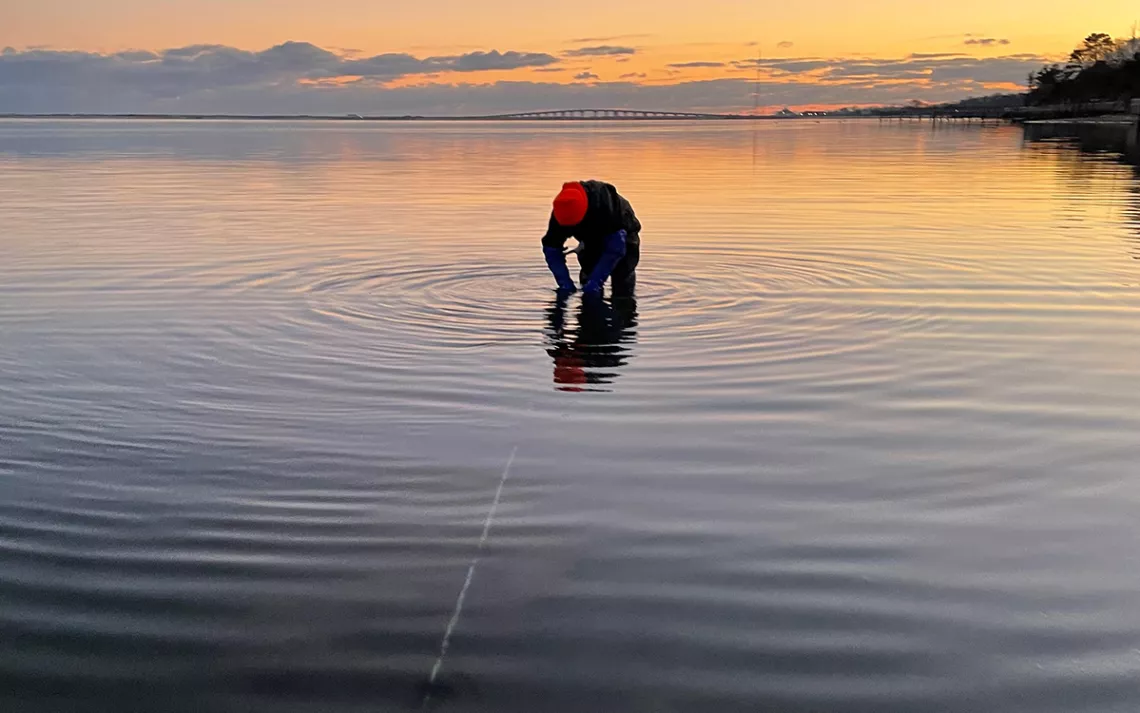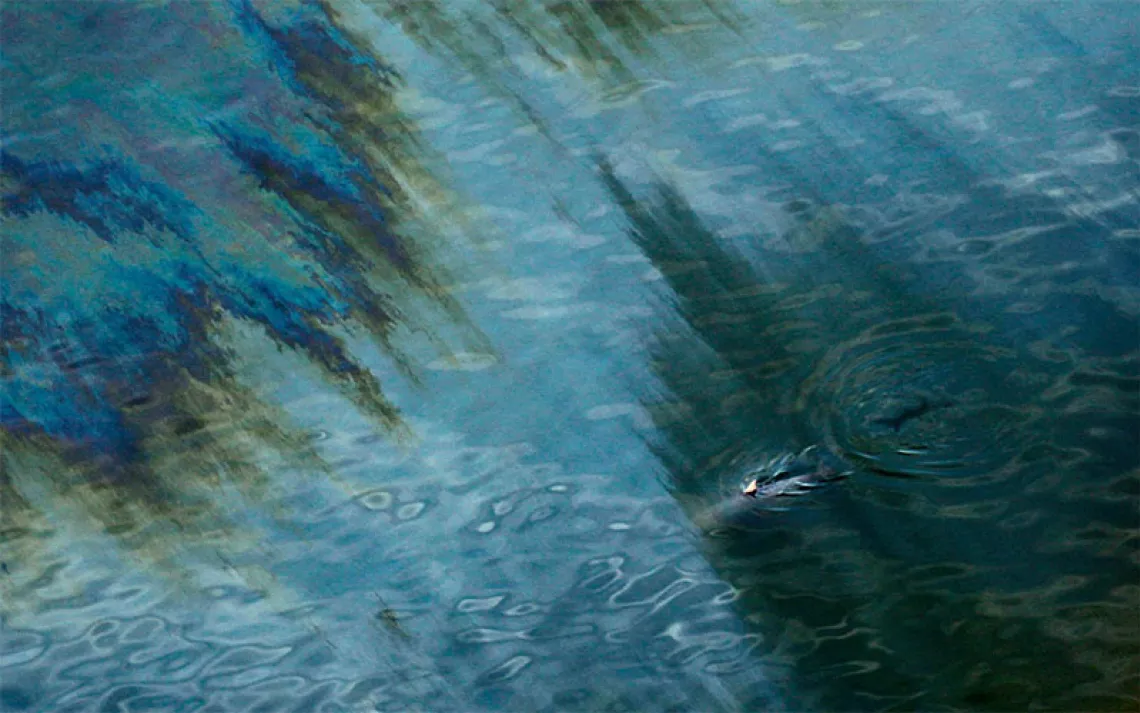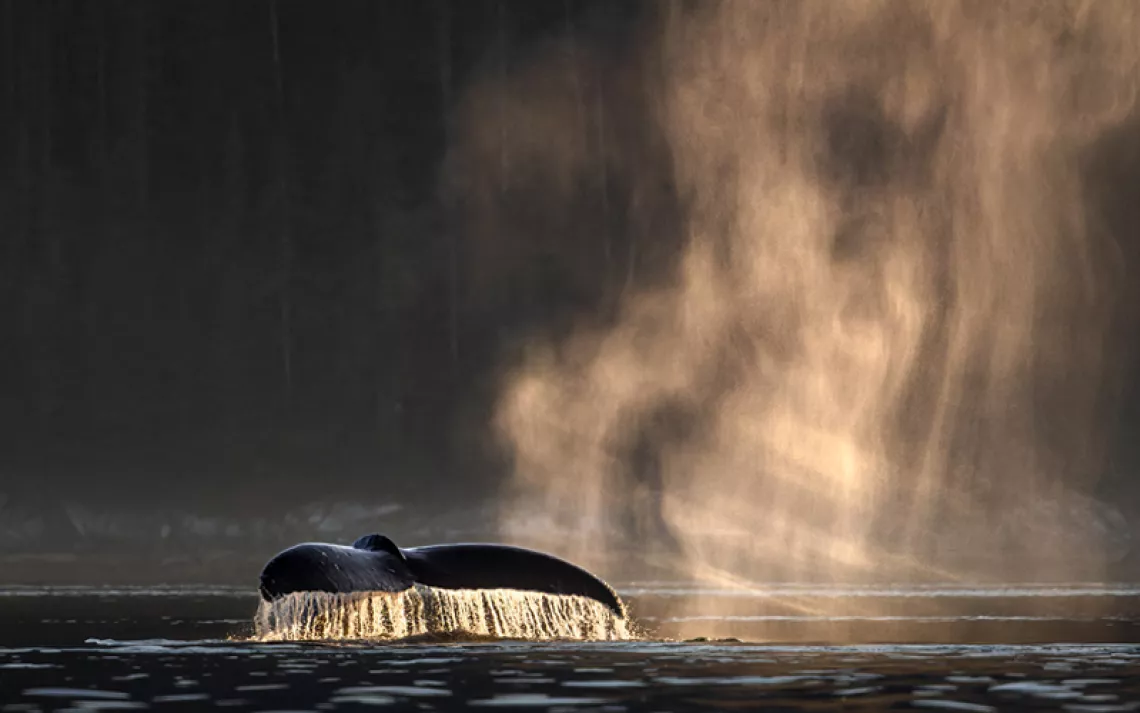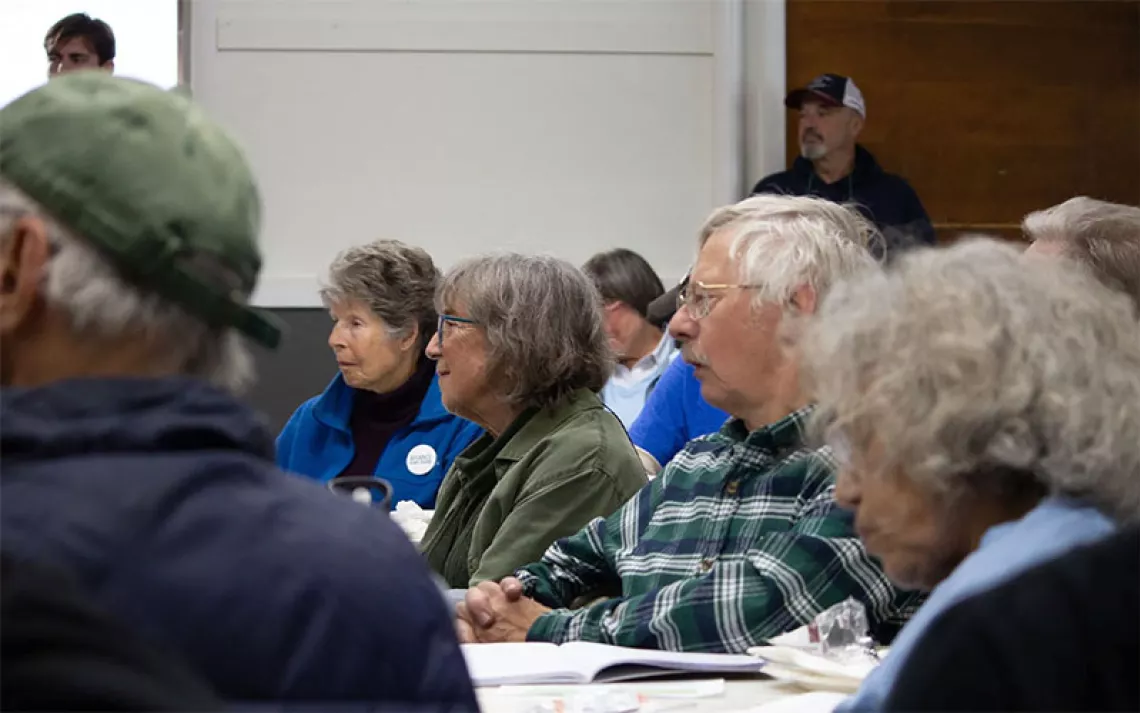The East Coast’s First Indigenous Kelp Farm Readies for Harvest
Seaweed cultivation holds promise as a new front in the fight against climate change

Photos courtesy of GreenWave
At 7:30 on a chilly Tuesday morning in February, the tide was low in Shinnecock Bay, on the east end of Long Island. Tela Troge put on insulated waders and gloves and walked out into the shallow water to check on her kelp lines. “We monitor them pretty closely to make sure they're getting everything that they need,” she says. Troge is a member of the Shinnecock Nation and one of six women who make up the Shinnecock Kelp Farmers, the first Indigenous-owned and -operated kelp farm on the East Coast. Except when there were blizzards, she and other members of her co-op have been examining their kelp’s progress about once a week this winter. As of that morning, their yellow-brown strands had grown about 1.5 inches. “It’s been really encouraging, and we should be able to start our first harvest by this April,” she says.
Seaweed cultivation holds promise as a new front in the fight against climate change. Kelp absorbs chemicals—nitrogen, phosphorus, and carbon dioxide—that harm other marine life and fuel algae blooms. Beyond the ecosystem benefits of simply growing kelp, it can be harvested as a source of food and fertilizer. And the Shinnecock were doing so long before the recent trend.
Colonial settlers in the 1600s made deals that reserved the right for Shinnecock people to harvest seaweed. These so-called seaweed cases actually became a crucial part of the Shinnecock’s application for federal tribal recognition, which was finally granted in 2010. Now Troge and her collaborators are reviving that traditional practice.
“We just thought it was really a good match for what we wanted to accomplish here,” she says. “Because we consider ourselves not only land defenders, but water protectors, and we've been increasingly concerned about the water quality due to overpopulation of the Shinnecock Hills and what the nitrogen runoff is doing to marine life here.”

For thousands of years before European settlers and the commercial fishing industry arrived, the Shinnecock were the stewards of this ecosystem. Their territory once stretched across a large chunk of eastern Long Island, from Brookhaven to Easthampton, but now covers approximately 1,200 acres, mostly on a peninsula that juts out into Shinnecock Bay. They’re surrounded by some of the most expensive real estate in the country, with celebrities in multimillion-dollar homes and golf courses that have hosted the US Open. Continued development and an increasing population have encroached on sacred Shinnecock ancestral land and caused a marked strain on the environmental resources they depended on for sustenance. Nitrogen is seeping back into the sea from a bad patchwork of septic systems and from the fertilizer used to maintain huge lawns, Troge says.

Shinnecock Bay was once abundant with aquatic life—especially shellfish like clams and oysters—that not only offered a rich source of food but also filtered the water and stopped harmful algae blooms. Today those marine populations have severely declined. For example, the South Shore Estuary, which includes Shinnecock Bay, was once home to the biggest hard clam fishery in the country, and researchers at Stony Brook University have found that by the end of the 20th century, their numbers dropped by 99 percent from their peak. The kelp farmers hope their project could be one factor that helps mitigate the problem.
Last winter, they put four lines of kelp in the bay to test the viability of the project. After that initial success, their work began in earnest with some crucial infrastructural help from a new partner: the Sisters of St. Joseph. At their waterfront villa in Hampton Bays, the nuns donated space for the kelp farmers to build a pilot hatchery.
“It was just a natural fit,” says Sister Kerry Handal. In 2015, sisters had established a code of ethics around preserving and protecting land, treating all life on Earth as sacred. “I would say, five years ago, we never even heard the word kelp, and look at all the things we've learned in less than nine months. And it has become an important relationship between the kelp farmers and the sisters.”
Kelp spools were cultivated inside large aquarium tanks at the villa. They were given not only light, minerals, and water, but also prayers, kind words, songs, and poems. (To get more tribe members involved in the project, Troge says, the farmers brought kids—as well as elders via Zoom—into the hatchery to talk to the kelp. The sisters joined in too.) The fuzzy spools showed steady growth and were planted in the bay shortly after Christmas. Once the kelp is harvested, Troge says, they’re hoping to get as many of their neighbors as possible to purchase their products, like a sugar kelp soil amendment that could take the place of chemical-laden fertilizers.
The kelp farmers are getting technical assistance from Greenwave, an ocean farming incubator started by commercial fisherman Bren Smith in 2013. Greenwave is also including the Shinnecock co-op in a pilot program in which kelp farmers are paid 10 cents a pound for the kelp grown and they can still sell it wherever they want. Smith says he’s impressed not only with the early success of the Shinnecock’s kelp growing but also with their coalition building and partnership strategies. Although fighting climate change requires scale, Smith says he believes that it matters who farms kelp.
“There is this big question that keeps me up at night,” he says. “Is this gonna just be a vertically integrated industry with a couple companies owning all the hatcheries, all the farms, all the processing, with all the benefits going to three guys at the top? That looks like land-based ag. The exciting thing is maybe we can build it differently out at sea. I think the industry is right on the edge of which way it'll go.”
In December, New York governor Kathy Hochul signed a bill that opens up kelp farming for more sites in Suffolk County, at Gardiners Bay and Peconic Bay. As the Shinnecock are already off to a promising start, Troge thinks their expertise could be a really good resource for anyone else who wants to get involved.
“You don't have to be a scientist to do this,” says Troge. “All you have to do is be someone who cares about water, human survival, and making a dent in the climate crisis.”
 The Magazine of The Sierra Club
The Magazine of The Sierra Club



